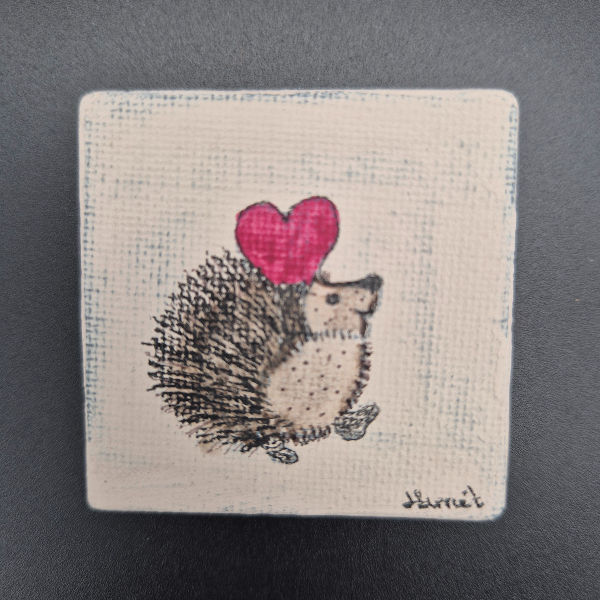The A to Z guide for helping hedgehogs
- Hedgehog Sanctuary

- Oct 19, 2019
- 4 min read
Here is the A to Z guide for helping hedgehogs!

A...
is for Autumn orphans and juveniles. Keep an eye out for any small hedgehogs that look underweight. If you find any small hedgehogs visit our Found A Hog page.
B...
is for Bonfires which are popular nesting or hiding places for hedgehogs. Make sure you check bonfires before lighting them or relocate them on the day of burning. Why not make a compost heap for hedgehogs to burrow in over winter?
C...
is for Hedgehog Champions, spreading the Hedgehog Street message to their neighbors and local communities. Find out more at Hedgehog Street.
D...
is for Disease and its impact. The Garden Wildlife Health (GWH) project is looking into whether disease is a factor in hedgehog decline and working out what a natural level of disease and parasitism may be. To report any dead or ill hedgehogs visit the GWH website www.gardenwildlifehealth.org
E...
is for Events. If you are running any events in your community, let us know and we can email you some leaflets or come and do a talk.
F...
is for supplementary Food. Meat-based cat or dog food, special hedgehog food (all of which we sell and helps the hedgehogs we look after) or dry cat food, are great for hungry hedgehogs that need to bulk up for winter.
G...
is for Gardens, a great habitat for hedgehogs, especially if you have log piles, wild grass areas or good refuge spots. With over half a million hectares of gardens in Britain they are vital to hedgehog survival.
H...
is for Hibernacula, the nests in which hedgehogs hibernate. They build them in log piles, compost heaps, patches of brush or in a specially built hedgehog house.
I...
is for Insulation (we sell air dried hay and helps the hedgehogs we look after). Hedgehogs need to keep warm and snug during their hibernation, so providing them with dried leaves or straw will allow them to insulate their winter nests.
J...
is for Joining up gardens. Get your neighbors to put access holes in their wooden fences to allow hedgehogs to freely roam between gardens.
K...
is for two Kilometers, the average distance that a hedgehog roams in a single night.
L...
is for Leaf piles which can provide both important hibernation sites for hedgehogs and nesting material for hedgehog boxes (which we sell and helps the hedgehogs we look after). It’s also valuable food for the insects that hedgehogs eat.
M...
is for Mothers. Female hedgehogs have raised their babies and will be trying to regain condition and increase their weight in time for hibernation. Males often enter hibernation before females as they have had more time in late summer and early autumn to ‘put on the pounds’.
N...
is for Neighbors. Hedgehogs need more than one garden to forage in so get to know your neighbors and local community and persuade them to make their gardens hedgehog-friendly.
O...
is for Old and decaying wood. Creating a wood pile in your garden will not only provide an important habitat for insects, which hedgehogs can then feed on, but also be a safe, secure sites for nesting or hibernation.
P...
is for Ponds and swimming Pools. Hedgehogs are actually good swimmers, but can drown if not able to get out of a pond or pool. Ensure that the sides of ponds are gently sloped to allow hedgehogs to climb out, or you can use a piece of chicken wire or wood to make a ramp. Similarly, make sure all swimming pools are securely covered before night.
Q...
is for Quiet corner in your garden, in which to place your hedgehog house (which we sell and helps the hedgehogs we look after) or log/leaf pile. Do not disturb hibernating hedgehogs as it may cause them to stir and use up valuable energy reserves.
R...
is for the fat Reserves that hedgehogs need to build up before they hibernate. Around 30% of their body weight is fat when they enter hibernation.
S...
is for Strimming with care. Hedgehogs are often hiding in long grass or brush and their natural defense mechanism is to curl into a ball – which sadly isn’t much protection against machinery. Check all long grass or vegetation carefully before mowing or strimming.
T...
is for Torpor, the state hedgehogs enter when they hibernate. During hibernation a hedgehog’s body temperature drops to match the surroundings. This allows them to save a lot of energy but slows down all other bodily functions making normal activity possible.
U...
is for being Untidy. Leave an area of your garden to go wild – brambles, log piles, leaf piles and long grass or scrub are all perfect places for hedgehogs to make cosy a hibernation nest.
V...
is for Vehicles on roads. Every year thousands of hedgehogs are killed on roads in Britain. Autumn is one of the peak times for road casualties as young hedgehogs disperse, so please drive carefully.
W...
is for a fresh bowl (which we sell and helps the hedgehogs we look after) of Water. Hedgehogs can remain active well into November and December and will often move nesting sites during hibernation. A bowl of fresh water will be appreciated by any hog out and about.
X...
is for ToXic Chemicals. Try to not use slug pellets or pesticides in your garden as not only will they reduce the number of insects available for hedgehogs to eat, they might make hedgehogs very ill, or even kill them.
Y...
is for You Tube. Visit our Facebook Page or our YouTube channel where you can watch some fantastic videos of hedgehogs of those that where visiting our sanctuary.
Z...
is for Zzzzzz... sleeping hedgehogs will be warm to the touch, whilst hibernating hedgehogs will be colder. The spines of a hibernating hedgehog will still prickle if touched, but the spines of a dead one will not.
Hedgehog Street is a joint campaign run by People’s Trust for Endangered Species (PTES) and the British Hedgehog Preservation Society (BHPS).
























